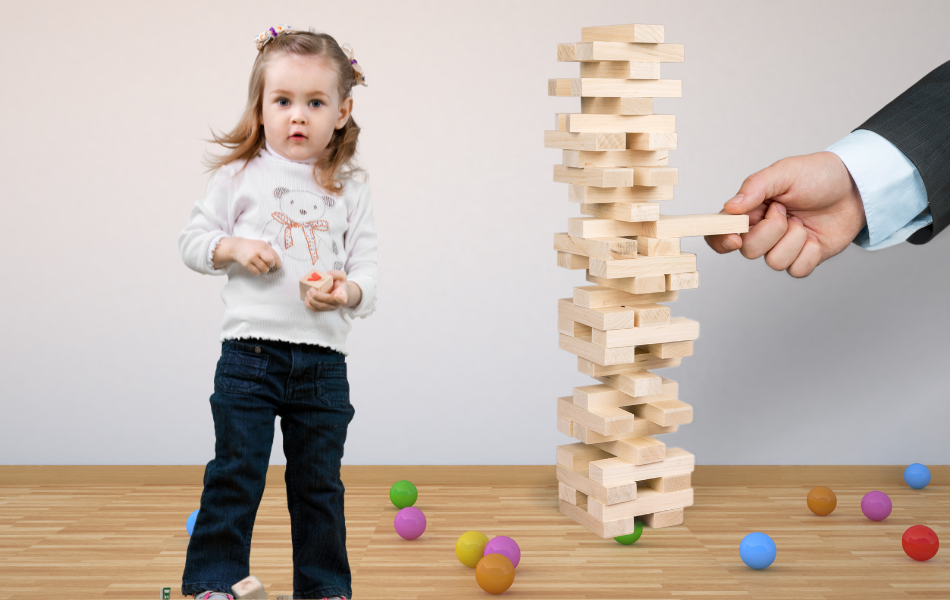Unlock the secrets of children’s development by understanding different emotions. Our insightful guide empowers parents and educators for confident support.
Exploring the rich palette of emotions in children, this article dives into the kaleidoscope of their experiences. From the boundless joy of discovery to the subtle hues of curiosity and the shadows of uncertainty, each emotion shapes the cognitive and social development of our young ones. Join us on a journey through the intricate landscape of childhood emotions.
Introduction: Unraveling the Medley of Childhood Emotions
A Relatable Scenario Involving Children Experiencing Emotions
In a small town nestled between rolling hills and a meandering river, there existed a vibrant school where the laughter of children echoed through the corridors like a melody. One sunny morning, a group of first-graders gathered in the schoolyard, their backpacks bouncing with each skip as they awaited the beginning of a new school year.
Amidst the excited chatter, there were two friends, Emma and Noah. Emma, a bright-eyed girl with a perpetual smile, couldn’t wait to dive into the world of books and learning. Noah, on the other hand, stood by the entrance, his eyes reflecting a mix of anticipation and nervousness. The school bell rang, and the once jubilant atmosphere turned into a tapestry of emotions.
As the children entered the classroom, a kaleidoscope of feelings unfolded. Emma’s face beamed with joy as she discovered her favorite spot by the window, while Noah hesitated near the unfamiliar faces, wrestling with the uncertainty of a new environment. The teacher, Mrs. Johnson, noticed the array of emotions playing out among her young charges and decided to weave a narrative that would help them understand the intricate dance of feelings.
And so, she began to tell a parable — a tale that mirrored the emotions bubbling within the hearts of Emma, Noah, and every child in that classroom. Little did they know that this parable would not only mark the beginning of their academic journey but also serve as a compass guiding them through the labyrinth of childhood emotions.
The Parable of the Enchanted Garden
| Once upon a time, in a quaint village nestled at the edge of an enchanted forest, there existed a magical garden. This garden, known far and wide as the “Garden of Emotions,” was tended by a wise and gentle gardener named Joy. In the heart of this extraordinary garden, there grew an assortment of vibrant and unique flowers, each representing a different emotion. There were blossoms of Joy that sparkled like the sun, petals of Sadness that glistened like dewdrops, and even thorns of Anger that glowed with an intense flame. One day, a group of children from the nearby village discovered the hidden path that led to this enchanting place. Among them were two friends, Emma and Noah. As they entered the garden, a magical mist enveloped them, and the flowers seemed to come alive, whispering tales of the emotions they held. Emma, with her ever-present smile, found herself drawn to the flowers of Excitement and Curiosity. These blossoms swirled with vibrant colors, reflecting her eager spirit. She danced among the petals, feeling the joyous energy of the garden. Noah, however, stood at the entrance, his eyes fixed on the thorns of Anxiety and the shadows of Uncertainty. The Garden of Emotions felt vast and unknown, and Noah hesitated, unsure of where to step next. His heart held a mix of emotions as he navigated this new landscape. Sensing the children’s experiences, Joy, the wise gardener, approached them. She explained that just like the garden, our hearts are home to a myriad of emotions, each with its unique beauty. She encouraged Emma to embrace the blossoms of Happiness and Confidence, while guiding Noah to tread gently among the thorns, acknowledging and understanding his feelings of Apprehension. As the children explored the Garden of Emotions together, they learned that every emotion had its place and purpose. Joy shared the wisdom that acknowledging and expressing these emotions was the key to a flourishing heart. And so, as the children left the enchanted garden that day, they carried with them a newfound understanding—a compass to navigate the vast landscape of their emotions, and the knowledge that, just like the Garden of Emotions, the tapestry of feelings made life’s journey all the more beautiful. |
The Emotional Landscape of Childhood

In the intricate tapestry of childhood, emotions weave a vibrant and dynamic pattern, creating a landscape as diverse as the colors in a sunset sky. Children, from the earliest stages of life, embark on a journey through a vast emotional terrain, where joy and sorrow, excitement and fear, play together like actors on the stage of their developing minds.
Emotions, far from being mere fleeting reactions, are the architects of a child’s growth and development. They form the cornerstone of the human experience, influencing cognitive, social, and psychological dimensions. A child’s emotional landscape is an evolving canvas, painted with the hues of discovery, learning, and self-awareness.
As toddlers take their first tentative steps, expressions of delight or frustration are their means of communication, revealing the intricate dance of feelings in even the smallest of interactions. Emotions serve as the compass guiding their exploration of the world, shaping the lens through which they perceive and understand their surroundings.
In the crucible of childhood, the spectrum of emotions expands. Each experience becomes a brushstroke, contributing to the evolving masterpiece of the developing self. The joy of making a new friend, the sadness of a scraped knee, the excitement of a first day at school—these moments are not just incidents but pivotal chapters in the narrative of emotional growth.
Crucially, emotions are not isolated occurrences; they are threads woven into the fabric of a child’s identity. The ability to understand, express, and manage these emotions is a skill set that extends beyond the realms of childhood, influencing relationships, decision-making, and overall mental well-being throughout life.
In essence, the emotional landscape of childhood is a mosaic of experiences that not only reflect the richness of the human condition but also serve as a foundation for resilience, empathy, and self-discovery. Acknowledging and navigating this complex terrain is not only crucial for the child but forms an integral part of fostering emotional intelligence—an invaluable asset that paves the way for a fulfilling and harmonious life journey.
Purpose of the Series
In the symphony of childhood emotions, every note contributes to the melody of growth, shaping the cognitive and social landscape of a child’s development. The purpose of this series is to embark on a nuanced exploration of the myriad emotions that color the canvas of childhood, deciphering their significance in fostering cognitive abilities and social aptitude.

Understanding the Significance
Emotions are not merely transient states; they are the architects of a child’s mental and social architecture. Each emotion, from the exuberance of joy to the pangs of disappointment, plays a pivotal role in sculpting neural pathways, enhancing cognitive functions, and influencing how children engage with the world.
Unraveling the Emotional Medley
The series aims to unravel the emotional medley of childhood, examining how each emotion contributes to the intricate interplay of cognitive and social development. By delving into the richness of these emotional experiences, we seek to offer insights that extend beyond the surface, providing parents, educators, and caregivers with a deeper understanding of the factors that shape a child’s emotional intelligence.
A great book from Amazon is Threads of Existence: Unraveling the Tapestry of Life
Upcoming Articles
- Navigating the Waters of Joy: Exploring the role of joy in cognitive development and its impact on creating positive social bonds.
- The Depths of Sadness: Investigating the significance of acknowledging and managing sadness as a crucial element in building resilience and empathy.
- The Power of Anger: Examining how the expression and understanding of anger contribute to emotional regulation and interpersonal skills.
- Discovering the Unknown: Curiosity in Childhood: Unveiling the cognitive benefits of curiosity and its influence on a child’s desire to explore and learn.
- Friend or Foe? Jealousy in Childhood: Understanding the nuanced role of jealousy in social interactions and its impact on relationship dynamics.
- Nurturing Empathy: Exploring the roots of empathy in childhood and its profound implications for fostering compassion and understanding.
Read my article Emotionally Enriching Stories: With Characters and Animals. These stories and beautifully illustrated books will be a companion for your child experiencing different emotions.
By delving into these specific emotions and more, our series aims to provide a comprehensive guide for parents, educators, and anyone involved in the emotional development of children. Together, we will navigate the intricate pathways of childhood emotions, unlocking the potential for enriched cognitive abilities, enhanced social skills, and a more profound understanding of the human experience.
The Importance of Emotional Literacy

In the delicate dance of childhood, emotions are the silent orchestrators, shaping the contours of a child’s inner world. The ability to understand and address these emotions often termed emotional literacy, emerges as a cornerstone in the foundation of a child’s overall well-being and interpersonal skills.
Understanding Children’s Emotions
Emotional literacy involves not only recognizing and labeling one’s own emotions but extends to comprehending the feelings of others. For children, whose emotional landscapes are still unfolding, this skill becomes a compass, guiding them through the labyrinth of their experiences. By fostering an awareness of emotions, children gain a profound understanding of themselves and those around them, laying the groundwork for healthier relationships.
Contributing to Overall Well-being
It is intrinsically linked to mental health and overall well-being. When children learn to navigate their emotions, they cultivate resilience in the face of challenges, building a sturdy psychological foundation. This self-awareness becomes a protective armor, helping children cope with stress, anxiety, and the inevitable ebbs and flows of life. In turn, emotional literacy acts as a buffer against the potential long-term impact of unresolved emotional struggles.
Enhancing Interpersonal Skills
At its core, emotional literacy is a social skill that forms the bedrock of effective communication and collaboration. Children who understand their emotions are better equipped to express themselves articulately, share their feelings with peers, and resolve conflicts constructively. By deciphering the emotional cues of others, they develop empathy—an essential ingredient in fostering positive relationships. Emotional literacy, therefore, becomes the bridge that connects individual emotional experiences to the intricate tapestry of social dynamics.
Building a Foundation for Lifelong Learning
Moreover, emotional literacy sets the stage for a lifelong journey of learning. Children who grasp the nuances of their emotions are more attuned to their own strengths and weaknesses. This self-awareness becomes a catalyst for continuous self-improvement, motivating them to adapt, learn, and thrive in an ever-changing world.
The importance of emotional literacy lies not only in understanding the language of emotions but also in using this understanding as a tool for navigating the complexities of life. As we equip children with the skills to decipher their emotional landscapes, we empower them to cultivate resilience, foster meaningful connections, and embark on a journey of self-discovery that transcends the boundaries of childhood and extends into a fulfilling and emotionally rich adulthood.
Navigating the Emotional Rollercoaster
Childhood is an emotional rollercoaster, where highs of joy and lows of sadness intertwine, shaping a child’s understanding of the world. Navigating this rollercoaster is an essential skill, fostering resilience and emotional intelligence. Parents and educators play a crucial role in guiding children through these twists and turns, helping them develop the tools to manage their emotions, build coping strategies, and embrace the richness of the emotional journey that forms the essence of growing up.
“I feel like a rainbow inside my heart. Sometimes it’s sunny with giggles, other times stormy with little raindrop tears. But every color tells a story, and my heart is a magical canvas of feelings.”
– Jacque (a 6-year-old)
I suggest reading my articles in the other categories:
Plus under this category of Different Emotions, you will discover further articles that will interest you.

